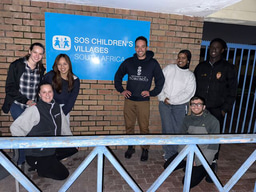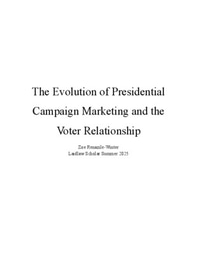Queer Lives: Narrations of Work Abroad (May 31)

For all the loveliness I keep my eyes open to when I travel, I have forgotten to mention one of the greatest irritants India has to offer. A few centimetres long, bloodthirsty, waiting patiently to strike until a window is left ajar or a door is opened briefly – mosquito season is upon us in Chennai, and I’ve found myself a prime victim. I wake, unfortunately not to my usual alarms or the sunrise, but to a stabbing pain that runs from my shoulder to my wrist: a constellation of itchy, flaming bumps that swell incessantly. Frowning, I slap at my arms a few times in a vain attempt to numb the sting, but it only leaves me gritting my teeth in frustration, shoving my head under the pillow to try and get back to sleep.
When I do rise properly, throwing on a loose shirt and a thick pair of jeans in a last-ditch attempt to stop the mosquitoes, I catch a glimpse of myself in the mirror and wince – I look like I’ve been completely mauled! There’s nothing to be done now but let the bites fade, though, so I gently slide my backpack up my arms and head out to meet my friends, who are dropping me back home. The day promises to be busy; I’ve been informed that plans have been made, although in true south Indian fashion I have not been informed of what those plans are, or what time they will be occurring.
I bid Sam goodbye with a quick hug, and head back into Ravi Mama Thatha’s apartment to absolute chaos. Ravi Mama Thatha and Uma Paati’s daughter, Nandu, has just arrived back from her family trip to Singapore; she, her husband Naveen, and her two young children are sat around the dinner table, engaged in what seems to be an extremely serious discussion about a Rubik’s Cube. I stand and watch the group for a few moments, three generations of one family all gathered on a variety of stools and chairs and wooden boxes, and I try to mark the similarities that run all the way from Ravi Mama Thatha down to Nandu’s youngest son. The slight furrow above their eyebrows, the curve of their lips, even the shape of their voices – they lie like threads to be followed.
Of course, it’s not long until I’m noticed, and I’m quickly brought into the conversation – or, more accurately, conversations. In India, whenever you gather more than three people in a room, I’ve noticed, the loudness level rises exponentially, as if someone’s cranked the volume dial up without warning. It’s almost comedic how immediate the change can be – within seconds, the room can go from almost silent, spare the shuffling of cards or a tap left running, to full of life and liveliness. For me, having lived in a dorm with enforced silent hours for the past two years, the sudden increase is surprising and somewhat overwhelming, but it soon becomes a great enjoyment of mine to sit quietly and watch the conversations bounce around a table. It reminds me of a childhood game popular when I was growing up, in which four players would stand around a chalk square and bounce a large rubber ball to each other – replace the chalk square with a round table and the singular large ball with fifteen small ones, and you’ve got the feel of it.
Soon, my aunt Sanchu joins us, and she and I, along with Nandu and Naveen, head out to an Indo-Chinese restaurant for lunch. The food is, as always, excellent – spicy minced lamb dotted with cumin, pork xiao long bao, a whiskey cocktail adorned with curry leaves – but what stands out even more to me is the company. I have not seen Nandu in years, as with many people from Chennai, but I remember being close to her when I was younger. In some ways, meeting people I remember being close to is even more nerve-wracking than meeting people I barely know, because there is a desire for closeness and a simultaneous doubt over its presence. Ten years and an ocean’s worth of distance has its effects, and I’m wary of what they may be. However, as I’m continuously reminded of here, people surprise you. I go into lunch expecting an awkward, even stilted hour, and instead I am embraced with open arms.
I’ve been sitting here for a few moments now, trying to find the perfect manner of describing this feeling of reconnection, but no analogy seems right. However, during my pondering, my dad’s aunt (for those of you who read the blogs last year, the famed Revathi Auntie) has been telling me a story about her recent trip to Yogyakarta. The entire trip had been booked through a guide service, but on the last day she and her husband had decided to try and find a specific cafe they had meant to visit. On their way there, they got lost, and ended up wandering the streets until they came across another cafe. Deciding to stop, they spoke to the owner of the cafe and mentioned, in their conversation, they were looking for something else to drink but coffee – however, Yogyakarta, as a predominantly Muslim area, heavily restricts the sale of alcohol. The cafe owner looked at them shyly before quietly pointing them towards the only open bar in town - where, I’m told, they spent an absolutely splendid evening.
My point here is not the alcohol - sorry to disappoint – but what my aunt said after. They would never have found the second cafe if they hadn’t gotten lost in the first place. While I haven’t really been cafe-hopping in Chennai, during my time here, I often find myself thinking about the idea of a journey. My journey back to Chennai has not been straightforward nor ideal, but inexplicably I have found my way back here, several years older, with a distinct taste for mangoes and a persisting hatred of mosquitoes. It is easy at times to feel like an echo of my parents, here in Chennai with my appa’s straight, dark hair and my amma’s easy smile, but I know fundamentally I am not. Instead, I greet the city as solely myself; here I am, and here you are.
After lunch, Nandu, Sanchu, and I head out around the city in pursuit of jewellery. Chennai is home to a range of jewellery boutiques, from high-end solid silver to cheaper costume pieces meant more for everyday wear. My search is solidly the latter; over the past year, I’ve developed a liking for charm bracelets and simple, gold necklaces, both of which are extremely easy to find around Adyar. After visiting a couple of stores – one named Attrangi stands out for its brightly painted walls and ornate decorative chokers – I come away with several fine pieces, but also skin so hot I worry it will peel off with another second of sunlight. It’s time, we decide, to head home.
If you’ve noticed I haven’t been writing as much about the sights of Chennai as I did last year about Mumbai – well, this hasn’t escaped me either. I’m eager to get out to more parts of the city, but the heat is simply oppressive, and so far, any endeavours beyond a quick car journey have proved nearly impossible. This is about to change, though; when we reach home, my paati and I decide that the next day we will head out to Mylapore, one of the older areas of the city, where my amma grew up. Mylapore is probably the area of Chennai I remember best. If I close my eyes, I can picture the crowded streets, packed with street vendors and templegoers. I remember sitting in my amma’s childhood house, a white-stone temple bungalow with an open ceiling, and staring up to the peaks of the Kabali temple, an ornate mesh of colour. The details are faded, like paint smudged by too much water, but the memories persist.





Please sign in
If you are a registered user on Laidlaw Scholars Network, please sign in